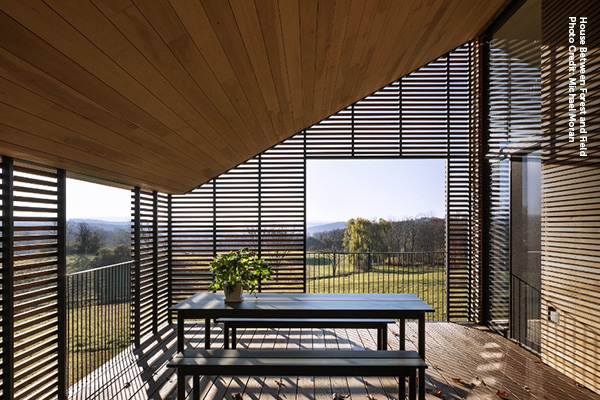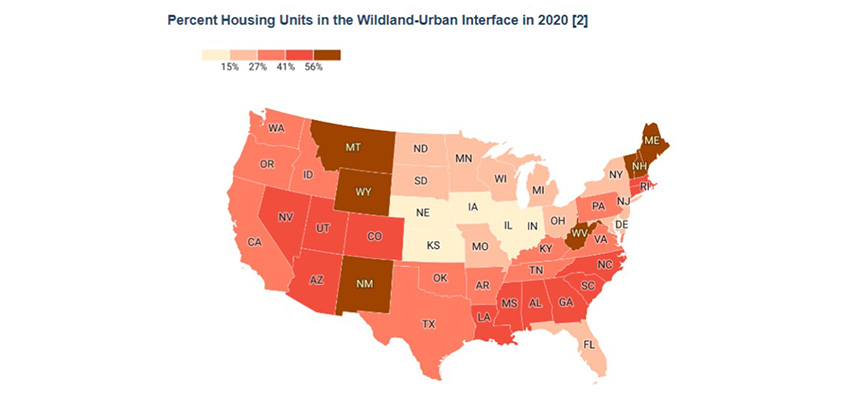HIGHLIGHTS
Program Updates
Future Innovators: Announcing Four Winners of Wood Solutions Scholarship

SLB Education is delighted to announce the four recipients of the National Council of Structural Engineers Associations (NCSEA) Wood Solutions Scholarship:
- Afeez Badmus from the University of Kansas, whose research focuses on developing measures to mitigate the effects of tornado winds on residential buildings.
- Baiyu Chen from Northeastern University, who focuses on design for deconstruction and mass timber-steel hybrid systems.
- Ronald Orellana from the University of Southern California, who plans to work in sustainable structural design.
- Tiana Noelani Thorp from the University of Delaware, who holds an M.S. in civil engineering from Oregon State University focused on structural engineering accompanied by an M.S. in wood science and engineering.
Out of the 110 exceptional students who applied for the scholarship, the four recipients are outliers in their cohort, excelling academically, pursuing graduate degrees in engineering, engaging in wood-focused research activities, and expressing a deep enthusiasm to enter the profession and design wood structures.
Research from the NCSEA has demonstrated there is a huge deficit of engineering programs that offer any significant wood design course. Many practicing engineers designing wood buildings learn how to do so on the job.
However, many students want to learn about wood products and systems and to pursue careers in wood engineering. To foster this enthusiasm, the SLB partnered with the NCSEA Foundation to establish the Wood Solutions Scholarship. The initiative aims to grow knowledge about wood in the profession as well as attract students traditionally underrepresented in the structural engineering workforce.
The scholarship aligns with our guiding principle that early exposure to wood solutions in education encourages future professionals to specify wood in their projects. By familiarizing students with wood’s properties, versatility, aesthetics, economic benefits, and sustainable impacts, we ensure they are well prepared to use wood as a key building material.
Supporting Taller Light-Frame Wood Projects

WoodWorks’ efforts in the light-frame realm have always focused on encouraging architects and engineers either new to wood or with experience on smaller projects to design five-story or taller buildings — and helping them do so successfully. In the first quarter of this year, for example, WoodWorks:
- Hosted 34 education sessions on light-frame wood topics for 9,144 participants (13.5% new contacts).
- Began assisting on 39 new light-frame projects between five and eight stories (totaling 6.3 million sq. ft.).
- Reported 16 light-frame projects between five and eight stories when they went to construction (totaling 3.8 million sq. ft.).
To achieve scale, WoodWorks plans to increase regional deployment of resources in areas of the country where midrise projects are being built, but it’s rare to see light-frame wood buildings over five stories — and to better understand the barriers that exist in specific markets. The longer-term goal is to identify information gaps so WoodWorks can provide resources that allow the design of these projects without direct assistance from a WoodWorks expert.
In the meantime, since light-frame topics continue to make up a large part of the program’s assistance, ongoing professional development is needed to ensure that the WoodWorks staff maintains the depth of knowledge to advise on advanced topics that might cause a building designer to default away from wood. To that end, the WoodWorks technical team recently hosted a five-part internal refresher series focused on issues that frequently arise on light-frame projects that covered:
- Code requirements for different types of fire-rated interior walls, unit demising walls, and corridor walls;
- Fire walls and shaft walls;
- Horizontal assemblies and detailing;
- Fire and acoustic concerns; and
- Concealed spaces.
With a combination of prerecorded and live Q&A sessions, the training was highly interactive, providing value to both new and seasoned staff.
The AWC Successfully Appeals ‘Buy Clean’ Addendum to Green Code
“Buy Clean” standards are intended to help construction projects lower their overall carbon footprint by requiring them to use products with lower embodied carbon. But because they focus on selecting the lowest embodied carbon material within a material category (a lower-carbon formulation of concrete, for instance), these requirements can lead projects away from specifying lumber by not requiring carbon considerations at a project’s design phase, even though lumber is already a naturally low embodied carbon material.
The AWC has been a leader on this subject, educating stakeholders on the benefits of a whole-building life-cycle assessment approach, which focuses on reducing the embodied carbon of the structural elements holistically by comparing the embodied carbon of like-performing materials at the design phase. The AWC recently supported a leading mass timber professor in preparing for a panel discussion that included comments on the distinction between the whole-building life-cycle assessment approach in “Buy Clean” and “Build Clean.”
The AWC was also recently successful in appealing an addendum to ASHRAE 189.1, which is referenced by the International Green Construction Code, that would have included “Buy Clean”–style requirements for building materials that cost more than 5% of the total materials cost. The IgCC establishes minimum requirements for green and high-performance buildings, and it’s referenced in requirements for certain public buildings and in some states and jurisdictions, including Maryland, Dallas, and Washington, D.C. The successful appeal is a significant step in minimizing the introduction of “Buy Clean” language and requirements in the standard process.
Single-Family Home LookBook Offers Inspiration for Builders and Residential Contractors

Alongside commercial project profiles, Think Wood continues to roll out residential case studies that showcase innovative uses of wood. Not only do these single-family home (SFH) stories highlight how critical a role wood plays in the home building industry, they also demonstrate innovative approaches to using wood beyond the framing of a home.
And they don’t resonate just with the residential audience: a profile of House Between Forest and Field by nArchitects — which features wood inside and out — was one of the most popular newsletter items in the first quarter across all of Think Wood’s audiences. Other high-performing SFH content included Lake | Flato’s North Fork Residence showcasing the beauty and brawn of high-tech prefabricated wood systems.
To continue the momentum and meet this ongoing demand, Think Wood launched a new SFH LookBook in May. This downloadable resource features compelling photography and freshly curated content, with a focus on outdoor use and wood decking. This resource will nurture Think Wood’s residential audience, which includes 5,500 builders and residential contractors, to protect market share and also appeal to commercial architects, engineers, and construction users who are inspired by single-family home design.
Spotlight
3 Innovations That Can Drive Mass Timber’s Growth

Amid the rapid ascent of mass timber, it’s easy to forget the big-picture story of just how far the technology has come in the last decade. In Building Design + Construction, respected mass timber designer Tom Chung, a Principal at Boston-based architecture firm Leers Weinzapfel Associates (LWA) and a Professor of Practice in Architecture at Auburn University, looks back at mass timber’s progress alongside three innovations that could shape mass timber’s future.
Chung’s article charts the progress mass timber has made since LWA designed its first mass timber building, the John W. Olver Design Building at the University of Massachusetts Amherst, which was designed in 2014 and completed in 2017. LWA’s Adohi Hall Student Housing at the University of Arkansas in Fayetteville — the subject of a new comparative life-cycle analysis published in the journal Buildings — was the largest CLT building in the United States when it was completed in 2019 (now surpassed).
Innovation in mass timber is not slowing down, however. Chung expresses optimism about several new approaches that show promise for making mass timber even more cost-effective and durable. One of those innovations, the rise of mass timber-steel hybrid structures, is a trend the SLB has been a leader on, partnering with the Council on Tall Buildings and Urban Habitat (CTBUH) and constructsteel to launch the Steel-Timber Hybrid Buildings Conference in 2022 and develop a technical guide on steel-timber hybrid buildings featuring detailed case studies, set to publish this year.
The SLB has led projects that help to spread Chung’s expertise and perspective more broadly. With funding from the U.S. Endowment, SLB Education partnered with Chung and LWA to lead one of SLB Education’s 2023 faculty workshops at UMass Amherst, and Chung will lead another workshop in 2024 with Auburn University’s Mass Timber Collaborative.
Mass timber’s growth continues to offer a compelling path for diversifying demand for lumber beyond our industry’s traditional single-family markets. With both near-term investments through programs like the Mass Timber Competition, the AWC, WoodWorks, and Think Wood, as well as forward-thinking investments through SLB Education, the SLB helps ensure mass timber reaches its full potential to maximize demand for lumber.
Industry Resources
FEA's Housing Dashboard
This housing dashboard is provided compliments of Forest Economic Advisors (FEA)
View the May Housing Dashboard
Virginia Tech's Monthly Housing Report
This monthly housing commentary report is a free service of Virginia Tech and is intended to help one gauge future business activity in the U.S. housing market.
April 2024 Reports (released in June 2024)
Part A: April Housing Commentary
Part B: April Economic Conditions


